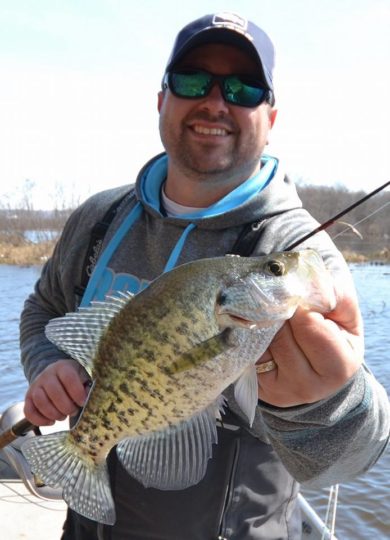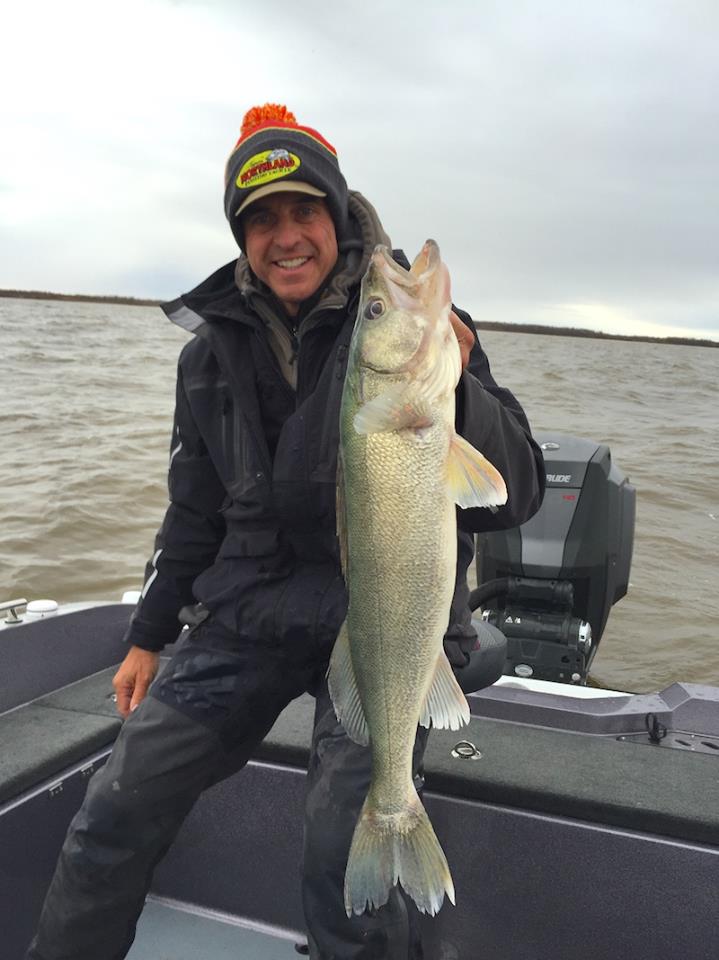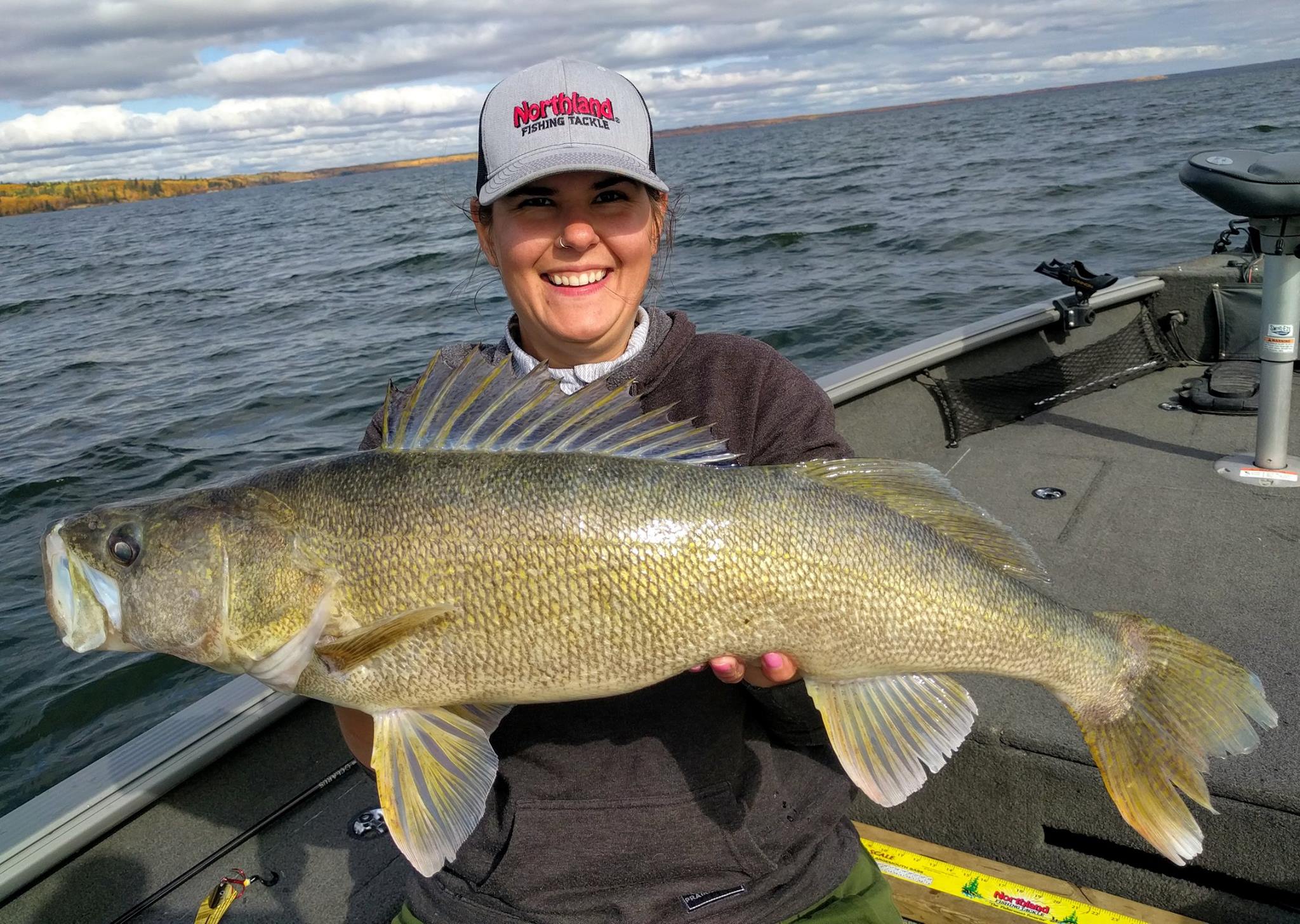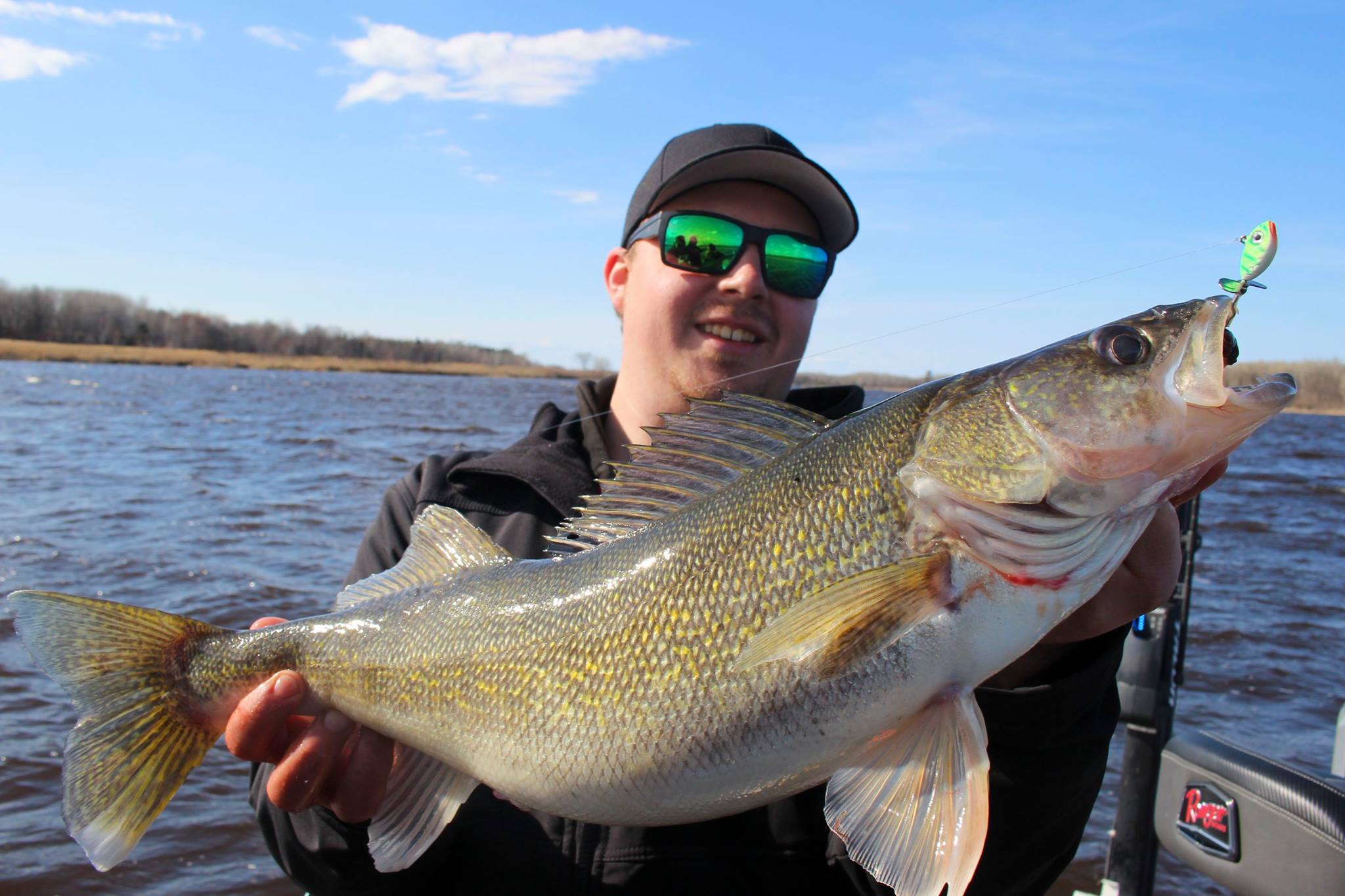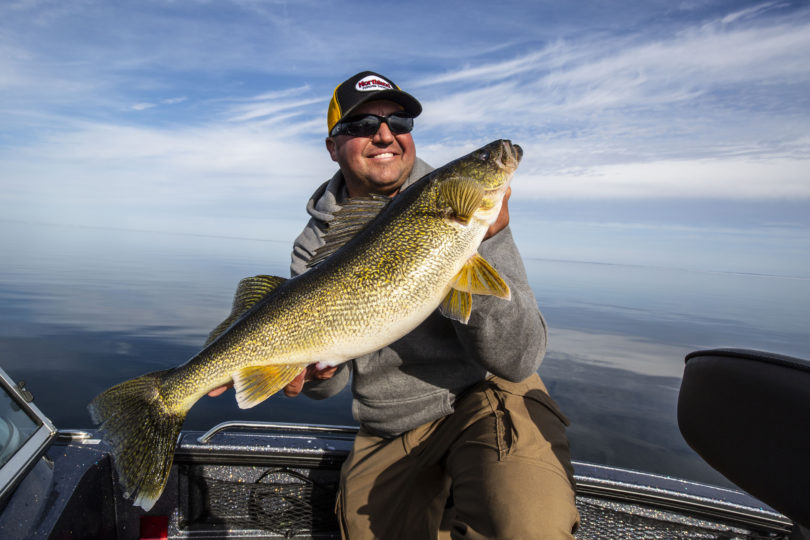
Perhaps the single quickest abandoned pattern in a walleye angler’s arsenal is the shallow jig bite, and I plead “guilty” to the above charge. Anglers that have six boxes with nothing but jigs in them for opener, forget what part of the garage they’re now in collecting dust. Early in the season, shiners are purchased not by the dozen or the scoop, but by the gallon, as the simple act of just threading one on the correct-sized jig will instill confidence throughout the north-country and beyond. One week later, anglers flee the shallow shorelines, developing weed lines, and near-shore rock piles for the hope of greener pastures out deep, and more familiar, longer-lasting summer patterns. Rigging, slip-bobbering, pulling crankbaits, anything but jigs seem to get the nod as temperatures rise and fishing heats up. Yet, there’s plenty reason to keep those jigs around, and even tip them with minnows in the weeks after opener. What’s more, is that there are a number of developing shallow bites right now that keep jigs in play, just maybe with some different meat threaded onto the business end.
I asked famed guide Tony Roach last week what was getting him bit, and his response was simple. “Everyone sees me up shallow in 4 -8 feet of water. They think I’m bass fishing, but I’m whaling on walleyes right now.” Truly, there are strong segments of the walleye population in most lakes that never leave the shallows for the entirety of the year. That’s news for structure fishermen that use electronics to pick apart deep water structure and dissect off-shore features during this time of year. As the lake system ramps up biologically, fish need food, cover, and oxygen, with the greatest limiter being food. Developing weeds, especially cabbage, are magnets when interspersed with rock or other hard bottom. These locations always hold some bait, and typically always hold some walleyes throughout the season.
My experience has seen some good shallow bites going right now too, with the best being a river run in 5 – 7 foot of water. Current is the great equalizer, as high skies, bright sun, and no wind still translates into a great day when fishing current seams, eddies, and riffles in rivers. The same conditions that absolutely kill other patterns, especially in clear water natural lakes, don’t seem to hassle the river fish that are taking advantage of current that sweeps unsuspecting invertebrates, bait, and terrestrials downstream and into their gullets. Long-lining and lead core staples that typically produce good numbers of fish during this time of year were poor in comparison. The bite ebbs and flows, with low-light periods still shining brightest, but moving water is a great savior to an otherwise weary day of walleye fishing.
In both scenarios, the classic pitch and run technique utilizing jigs and shiners were tweaked if only slightly. “As the water warms up, there’s a transition to where plastics become just-as, if not more effective than shiners or other minnows,” mentions Tony. “It’s something I see every year. As people move to the mud or mid-lake structure to rig, I simply switch to plastics and get these fish to chase a bit more,” explains Roach about his shallow techniques, honed on the big waters of Mille Lacs, Leech, and Winnie. Roach continues, “Plastics allow me to fish more quickly, cast further without losing bait, and keep on a hot bite without pausing to re-bait.” Those valuable bite windows can be small and precious, especially in unfavorable conditions, so staying with the heavy part of the bite and not missing out on fish becomes crucial to making a decent day into a great one. Visual cues put off by paddle-tails, curly-tailed grubs, and even minnow shaped flukes go well beyond your average minnow, especially in the colors and hues available. Nowadays, our choices for colors to pique a fish’s curiosity are nearly limitless, and often we can mimic forage that doesn’t even resemble our offering just by switching colors. For example, an orange jig and grub combination looks nothing like a rusty crayfish, but don’t tell that to Lake of the Woods walleyes that were coughing up blaze-orange crustacean parts all over the livewell last summer. Those fish happily engaged that offering crawled near bottom on many of the rock reefs and points that we fished.
Plastics design has come a long way since basic Mister Twister varieties from days gone by. Color and flash give way to vibration, flicker, and quiver all throughout the very lifelike baits on the market today. The end result is an attraction based not just on visual cues, but key components in the way a bait pulsates that trigger fish’s predatory instincts. As walleye’s lateral lines pick up these distinct tremors in the water column, I’m convinced that the heavy “thumpers” truly call in fish from a distance to warrant a close investigation at the very least.
Let’s say that for whatever reason, plastics just aren’t your thing, or they haven’t given you the confidence you need to reliably pitch them all day. As larvae rise from the lake bottom in clouds, and the resulting hatch of spinners cover everything near your favorite fishery, crawler bites become stronger no matter what part of the water column you fish. People pull them behind sinkers and on spinner-rigs, but don’t hesitate to thread one up a jig-head and pinch off the bottom half of the crawler. This is a go-to river technique that produces walleye, and often, the unintended non-target species. Few things that swim will offer a jig and nightcrawler safe passage back to the boat.
Stay shallow a bit longer and see if those same opener fish aren’t near where you left them. Fishing a jig is a rewarding way to get bit, and offers a few more weeks of great near-shore fishing for walleyes.

